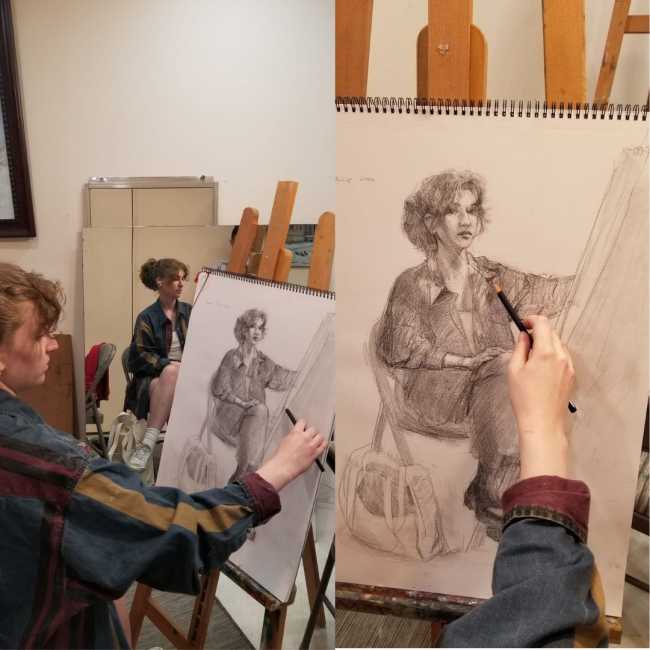Phone: (647) 894 7706

Although drawing classes are the most prominent form of art in many ways, in reality, art knows no bounds. That being said, all forms of art abide by some structure or basic principles. Most artists, be they budding ones or experts, follow one or multiple of these rules at one point or another. Thus, in this blog, 5 such core principles of art will be explored in detail.
The most basic design principle is anatomy. Be it drawing people, animals, or flora in scenery, it is necessary to abide by basic laws of anatomy. Factors such as form and proportion must always be considered to draw a beautiful and coherent art piece. This is why it's a staple even in drawing classes for kids.
To add exceptional visual depth to a drawing, it is important to add perspective. A general rule of thumb is to make objects, people or animals appear smaller the farther they are from the artist. This gives a three-dimensional illusion to a two-dimensional image. For instance, while drawing a scenery, the trees in the distance will be drawn smaller and those in front larger.
In essence, almost all drawings can be broken down into basic geometrical shapes such as circles, squares, rectangles, triangles, cylinders and so on. Form and structure are the dressing added to these shapes to make them appear more organic and realistic. These offer some width and depth to a drawing.
Adding lighting and shadow adds another layer of depth and realism to a drawing. For instance, if a light source is in front of the object, then its shadow will appear behind the object, and a drawing following this principle will look visually spectacular compared to a flat two-dimensional art piece.
Lastly, every painter must consider the colors they will use in their work. It requires basic knowledge of the color wheel, as it will determine the tone and theme of the artwork. Apart from choosing a color, one has to also consider colour saturation, that is, how vibrant a particular hue is, and lastly, the lightness or darkness of a particular color.
Your hunt for the perfect drawing class in North York, Ontario ends with VR School of Art. With an emphasis on European drawing principles, we are home to highly qualified art teachers who can guide your artistic journey. We also offer drawing classes for kids so they can hone their talent at an early age. So pick up the phone and give us a call at 647-894-7706 to get started.